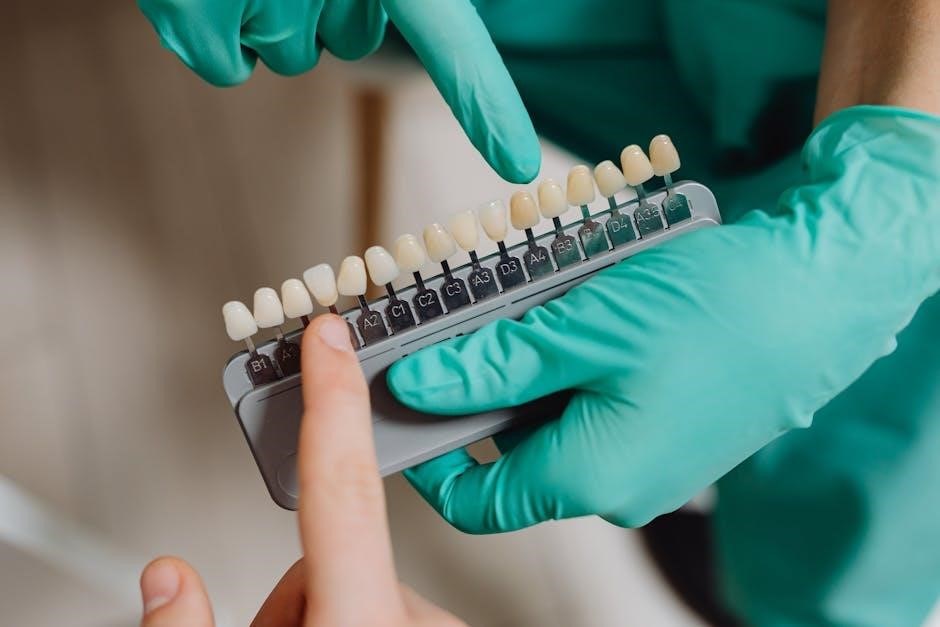
dental terminology pdf
Dental terminology is crucial for clear communication in dentistry, covering tooth anatomy, procedures, and materials. PDF guides provide comprehensive lists of terms, aiding education and clinical practice effectively.
1.1 Importance of Dental Terminology in Dentistry
Dental terminology is essential for precise communication among dental professionals, ensuring consistency in patient care, documentation, and insurance claims. Standardized terms prevent misunderstandings, enabling accurate diagnoses and effective treatment planning. Dental terminology also aids in educating patients about their conditions and treatments. Resources like Current Dental Terminology (CDT) codes and specialized glossaries provide a foundation for understanding complex terms, ensuring clarity and efficiency in clinical and administrative processes.
1.2 Brief History and Evolution of Dental Terminology
Dental terminology has evolved significantly over centuries, influenced by Latin and Greek roots, which form the foundation of many terms. Early terms often described anatomical structures or procedural techniques. The Middle Ages and Renaissance periods saw advancements in dental practices, leading to the development of specialized vocabulary. Modern dental terminology is standardized through systems like Current Dental Terminology (CDT) codes, ensuring uniformity and clarity. This evolution reflects the growing complexity of dentistry, aiding precise communication among professionals and improving patient care documentation.
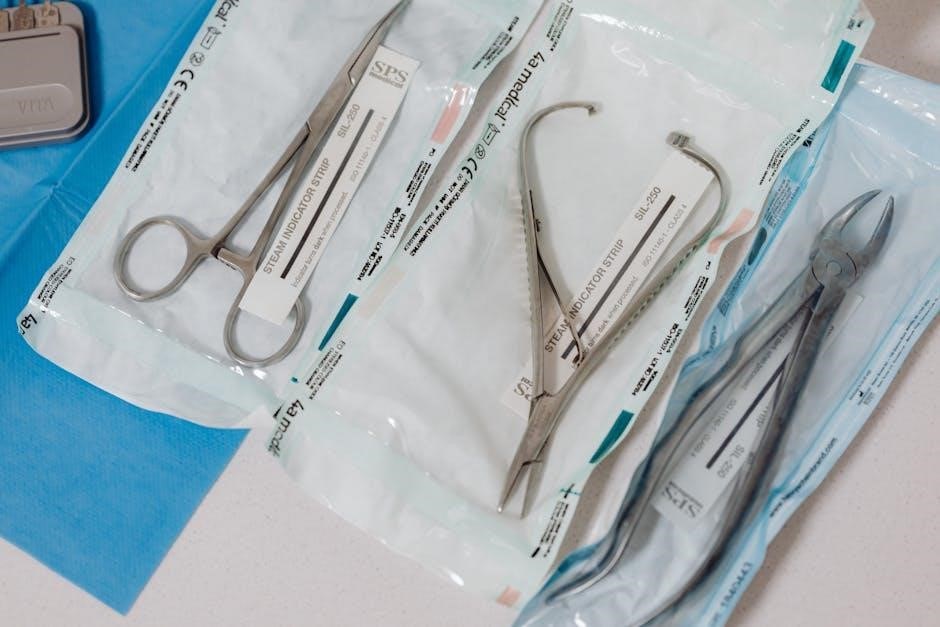
Basic Dental Anatomy and Terminology
Dental anatomy includes structures like teeth, gums, and surrounding tissues. Key terms include crown, root, and enamel, describing tooth components. Understanding these basics aids in communication and further learning.
2.1 Tooth Anatomy: Crown, Root, and Enamel
A tooth consists of three main parts: the crown, root, and enamel. The crown is the visible portion above the gum line, essential for chewing and speech. The root, hidden below the gum, anchors the tooth in the jawbone. Enamel, the hardest substance in the human body, covers the crown, protecting it from decay and wear. Understanding these components is vital for dental procedures and patient education, as outlined in dental terminology PDF guides.
These structures form the foundation of dental anatomy and terminology.
2.2 tooth Surfaces: Buccal, Lingual, Labial, and Palatal
2.2 Tooth Surfaces: Buccal, Lingual, Labial, and Palatal
Understanding tooth surfaces is essential in dental terminology. The buccal surface faces the cheek, while the lingual surface faces the tongue. The labial surface is toward the lips, and the palatal surface faces the palate. These terms are crucial for documenting procedures and conditions, such as caries or restorations. Dental terminology PDF guides often include diagrams and definitions to clarify these surfaces, aiding in accurate communication among dental professionals and ensuring precise treatment planning.
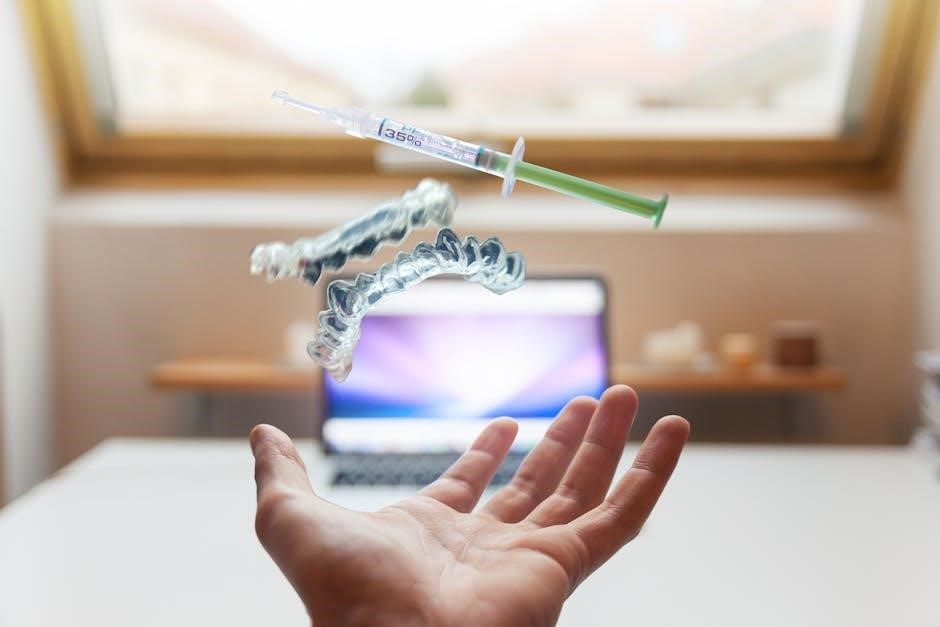
Common Dental Procedures and Terminology
Dental procedures include restorative, preventive, and surgical methods. Restorative procedures involve fillings, crowns, and bridges. Preventive procedures like prophylaxis and sealants maintain oral health. Surgical procedures include extractions and implants.
3.1 Restorative Procedures: Fillings, Crowns, and Bridges
Restorative procedures aim to repair damaged teeth, restoring function and aesthetics. Fillings treat cavities using materials like amalgam or composite. Crowns cover and protect severely damaged teeth, while bridges replace missing teeth. These procedures are essential for maintaining oral health and improving patient quality of life. They are commonly documented in dental terminology guides, ensuring accurate communication among professionals.
3.2 Preventive Procedures: Prophylaxis and Sealants
Preventive procedures focus on maintaining oral health and avoiding future issues. Prophylaxis involves professional teeth cleaning to remove plaque, calculus, and stains, helping prevent dental diseases. Sealants are protective coverings applied to tooth surfaces, especially molars, to prevent decay. These procedures are essential for early intervention and long-term oral health management. Dental terminology guides detail these practices, ensuring clear communication between professionals and patients about preventive care options and their benefits.
3.3 Surgical Procedures: Extractions and Implants
Surgical procedures in dentistry include extractions and implants, which are critical for addressing severe dental issues. Tooth extractions involve removing a tooth, either surgically or simply, often due to decay or overcrowding. Dental implants are artificial roots placed in the jawbone to support prosthetic teeth, restoring function and aesthetics. These procedures are detailed in dental terminology guides, ensuring precise communication among professionals. Tooth forceps and abutments are key tools, with implants often requiring osseointegration before crown placement, offering a durable solution for missing teeth.
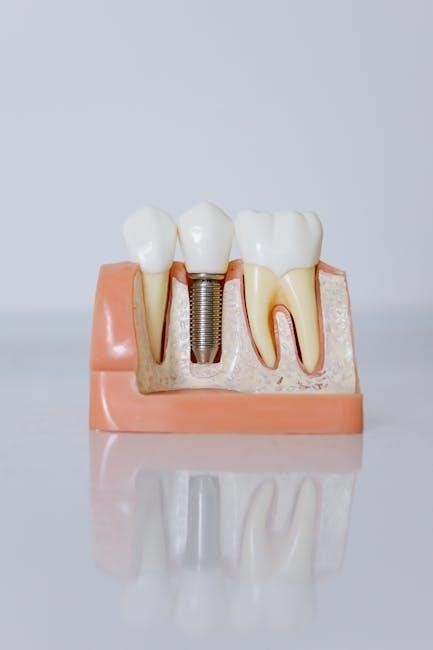
Dental Materials and Terminology
Dental materials like amalgam, composite, and gutta percha are essential for restorative and prosthetic procedures, each serving specific functions in repairing or replacing teeth structures.
4.1 Common Dental Materials: Amalgam, Composite, and Gutta Percha
Dental materials like amalgam, composite, and gutta percha are widely used in restorative procedures. Amalgam, a durable mercury-metal alloy, is often used for fillings due to its strength. Composite resin, a tooth-colored material, is preferred for its aesthetic properties and versatility in restorations. Gutta percha, derived from natural latex, is primarily used in root canal treatments to fill and seal the canal system. These materials play crucial roles in repairing and restoring teeth, each offering unique benefits for specific dental needs.
4.2 Uses of Dental Materials in Restorative and Prosthetic Procedures
Dental materials like amalgam, composite, and gutta percha are essential in restorative and prosthetic procedures. Amalgam is commonly used for durable fillings, while composite resin is favored for its aesthetic properties in tooth-colored restorations. Gutta percha is utilized in endodontic treatments to seal root canals, ensuring proper healing. These materials are chosen based on their mechanical properties, biocompatibility, and longevity, playing vital roles in restoring function and appearance to damaged or missing teeth, thus enhancing patient outcomes in both restorative and prosthetic dental care.

Administrative Dental Terminology
Administrative dental terminology includes terms like CDT codes, accepted fees, and patient records, ensuring efficient billing, insurance claims, and accurate documentation in dental practices.
5.1 Insurance and Billing Terms: CDT Codes and Accepted Fees
CDT codes are standardized identifiers for dental procedures, ensuring accurate billing and insurance claims. Accepted fees are the amounts providers agree to accept for services, influencing patient costs and practice revenue. Proper documentation and understanding of these terms are essential for efficient administrative processes in dentistry.
5.2 Patient Record Terminology: Charts, Diagnoses, and Treatment Plans
Patient records are essential for documenting dental history, diagnoses, and treatment plans. Charts detail clinical findings, while diagnoses outline specific conditions. Treatment plans map out proposed procedures, ensuring clear communication and continuity of care. Accurate terminology in these records is vital for legal compliance, effective patient management, and seamless coordination between dental professionals. Proper documentation ensures comprehensive care and serves as a reference for future treatments.
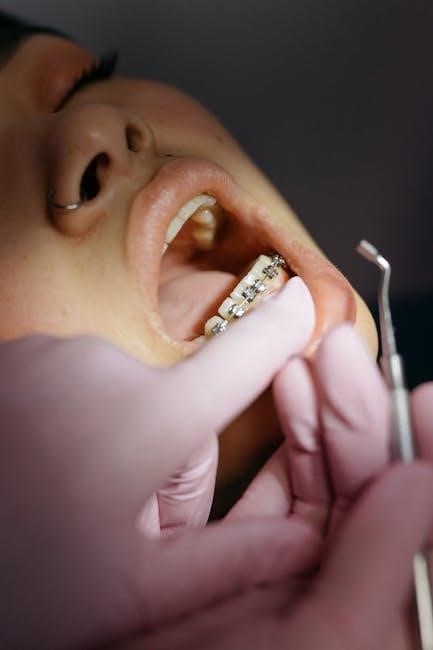
Dental Terminology in Specialized Fields
Dental terminology varies across specialized fields like orthodontics, periodontics, and prosthodontics. Each area uses unique terms for procedures, tools, and conditions, ensuring precise communication and documentation in patient care.
6.1 Orthodontic Terminology: Malocclusion, Crossbite, and Braces
Orthodontic terminology includes terms like malocclusion, referring to misaligned teeth, and crossbite, where upper teeth bite inside lower teeth. Braces, devices with brackets and wires, correct these issues. Retainers and elastics are also essential. PDF guides detail these terms, aiding professionals and patients in understanding diagnoses and treatments. Proper terminology ensures accurate communication and effective care in orthodontic practice, enhancing patient outcomes and streamlining procedures.
6.2 Pediatric Dental Terminology: Deciduous Teeth and Preventive Care
Pediatric dental terminology focuses on deciduous teeth, also known as baby teeth, and preventive care measures. Deciduous teeth begin erupting around six months of age and play a vital role in speech, chewing, and jaw development. Preventive care includes fluoride treatments, sealants, and education on oral hygiene. Terms like “bottle tooth decay” describe cavities caused by prolonged bottle use. PDF guides provide detailed explanations of these concepts, helping parents and professionals understand pediatric dental health and promote early interventions for lifelong oral well-being through proper terminology and practices.

Latin and Greek Influences on Dental Terminology
Dental terminology often roots in Latin and Greek, with terms like “gutta percha” and “crossbite” reflecting classical origins. These influences aid in understanding complex dental concepts globally.
7.1 Etymology of Common Dental Terms
Many dental terms derive from Latin and Greek roots, such as gutta percha (from Malaysian “getah perca”) and orthodontics (Greek for “straight teeth”). These etymologies provide historical context and linguistic depth, aiding professionals in understanding terminology. PDF guides detail these origins, revealing how classical languages shape modern dental vocabulary. This foundation enhances communication and precision in clinical practice, ensuring a universal understanding among dental professionals worldwide.
7.2 Role of Classical Languages in Medical and Dental Terminology
Classical languages, particularly Latin and Greek, form the foundation of medical and dental terminology. Many terms like orthodontics (from Greek “orthos” meaning straight) and molar (from Latin “mola” meaning millstone) illustrate this influence. These languages provide precision and universality, enabling clear communication across diverse regions. The structured nature of classical languages allows for the creation of complex terms, ensuring consistency in scientific and clinical discourse. This linguistic heritage is essential for modern dental education, research, and practice, bridging ancient wisdom with contemporary advancements.

Digital Resources for Dental Terminology
Digital resources offer free dental terminology PDF guides, providing comprehensive lists of terms, procedures, and materials. These resources aid education and clinical practice, ensuring accurate communication.
8.1 Free Dental Terminology PDF Guides and Downloads
Free dental terminology PDF guides are widely available, offering comprehensive lists of terms, definitions, and explanations. Resources like Cengage Learning’s guide provide detailed coverage of dental anatomy, procedures, and materials. These PDFs are ideal for students and professionals, covering clinical and administrative terms. Many guides, such as those by Marushchenko and Pazilovich, include etymology and practical applications. Regularly updated, they ensure accuracy and relevance. Downloadable for free, these resources are essential for mastering dental terminology, enhancing communication, and streamlining patient care.

8.2 Online Glossaries and Dictionaries for Dental Terms
Online glossaries and dictionaries provide instant access to definitions of dental terms, making them invaluable for professionals and students. These resources cover clinical and administrative terminology, offering detailed explanations and practical examples. Many include pronunciation guides, images, and cross-references to enhance understanding. Regularly updated, they reflect the latest advancements in dentistry. Popular options include glossaries from dental associations and educational institutions, ensuring accuracy and relevance. These tools are essential for clear communication, aiding in both patient care and academic pursuits.
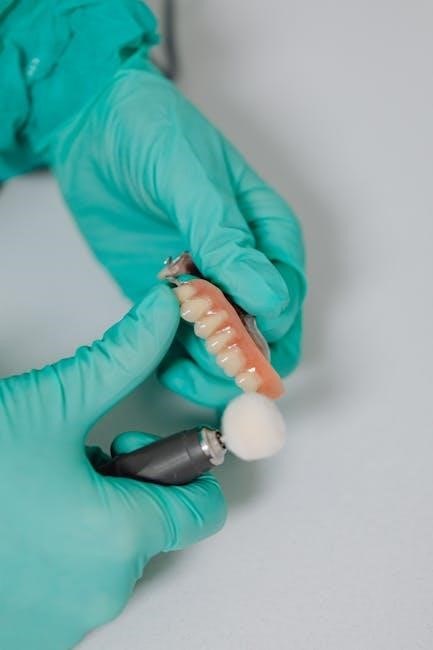
Dental Terminology in Clinical Practice
Dental terminology is essential for effective communication in clinical settings, aiding accurate documentation and patient care. It ensures clarity in procedures, diagnoses, and treatment plans, enhancing teamwork and patient education.
9.1 Communication Between Dentists, Hygienists, and Assistants
Effective communication among dental professionals relies on standardized terminology. Dentists, hygienists, and assistants use precise terms to ensure accurate understanding of procedures, diagnoses, and patient needs. PDF guides provide a common language, reducing errors and enhancing teamwork. Clear communication fosters efficient care, from initial assessments to complex treatments, ensuring all team members are aligned in patient management and outcomes. This consistency is vital for delivering high-quality, coordinated dental care.
9.2 Patient Education and Common Dental Phrases
Patient education relies on clear, understandable dental terminology. Common phrases like “prophylaxis” or “cavity” help explain treatments. PDF guides list terms and definitions, aiding communication. Dentists use phrases such as “Is the pain consistent?” to gather info. These tools ensure patients grasp their care, fostering trust and compliance. Standardized language in PDF resources helps professionals explain complex concepts simply, making dental care more accessible and patient-centered.
Dental terminology is the foundation of effective communication in dentistry, ensuring clarity and precision. Its evolution and standardization continue to shape modern practice, guiding future advancements in education and care.
10.1 The Role of Dental Terminology in Modern Dentistry
Dental terminology plays a vital role in modern dentistry by standardizing communication among professionals. It ensures accuracy in diagnoses, treatments, and documentation, fostering collaboration. With resources like PDF guides, terminology is easily accessible for education and clinical use. This standardized language enhances patient care, streamlines administrative tasks, and supports advancements in specialized fields like orthodontics and pediatric dentistry. By providing a common vocabulary, dental terminology bridges gaps between theory and practice, ensuring consistency and excellence in contemporary dental care.
10.2 Future Trends in Dental Terminology and Education
Future trends in dental terminology will focus on enhanced digital integration, with PDF guides and online glossaries becoming more interactive. Advances in AI and 3D modeling will revolutionize terminology learning, making it more immersive. Educational programs will emphasize cross-disciplinary collaboration, blending dental terminology with emerging technologies like teledentistry. Standardized updates to CDT codes and global terminology alignment will also be prioritized, ensuring consistency worldwide. These innovations will make dental education more accessible, fostering a skilled and interconnected dental workforce.